Six months at an Oil and Gas processing firm
A few months ago, I was opportuned to spend some time at Seplat petroleum development company (SPDC) in the southern part of Nigeria. I had studied chemical engineering for about three years but I hadn't acquired any field experience or a real world opportunity to put all I had been taught into practice. So when this chance came I gladly took it with open arms. I will be sharing a little of the knowledge I gained while working at an oil and gas integrated facility.
I was posted to different facilities at different times but I will talk more on the flowstation and the liquid treatment facility located at Amukpe, Delta State Nigeria.
THE FLOWSTATION
A flowstation is usually the first stop for hydrocarbon fluids coming from crude oil and gas wells. It's purpose is to separate the hydrocarbon into liquid and vapour phases, reduces turbulence and pass on the liquid to the next facility.
The capacities of Flow stations are classified as;
Single bank station
Double bank station
Single bank stations are designed to flow thirty thousand barrels (30000bbls) of crude oil daily while double bank stations flow sixty thousand barrels (60000bbls) of crude oil daily.
FLOWSTATION PROCESS OVERVIEW
Hydrocarbon enters the flowstation from the oil and gas wells through inlet pipes which have been bulked based on like pressures so as to ensure proper flow of the hydrocarbon. The well alignment process ensures that oil and gas wells of widely dissimilar pressures do not flow together as this would lead to problems on the flow pipelines as the principle of survival of the fittest would have to come into play (i.e hydrocarbon with higher pressures will flow leaving those of lower pressures behind).
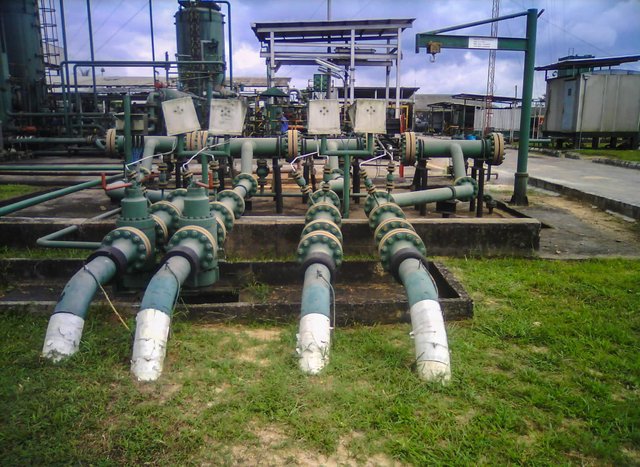 Inlet piping
Inlet piping
The hydrocarbon enters the inlet manifold which houses ligament valves meant for the control of the direction of the flow of the oil and gas wells into different headers.
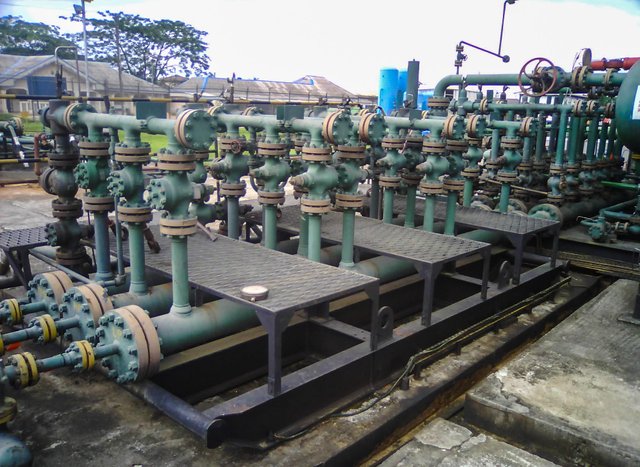 Inlet manifold
Inlet manifold
There headers include;
(1)The Test header
(2)The Low Pressure header
(3)The High Pressure header
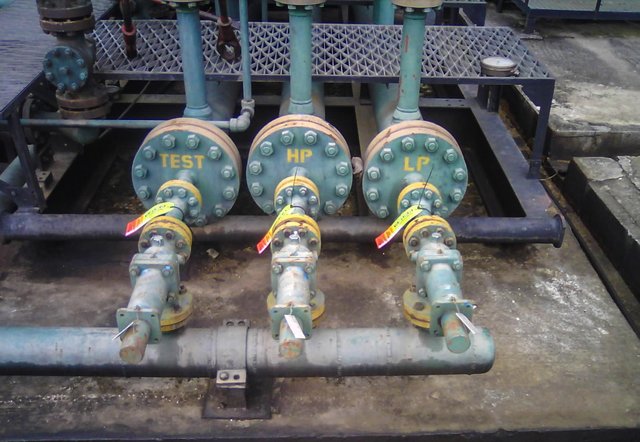 Relief valves and inlet headers.
Relief valves and inlet headers.
The headers are protected with relief valves which are located at one end of the the inlet manifold.
The different headers direct the flow of hydrocarbon into different separators which are;
(1)The High Pressure (HP) Separator
(2)The Low Pressure (LP) Separator
(3)The High Pressure/ Low Pressure Separator which can serve as either a HP or LP separator depending on the configuration.
(4)The Test Separator.
The hydrocarbon flows into the high pressure separator which has a static pressure of 3.5 bars.
The HP separator’s static pressure is maintained by BPCVs (back pressure control valves) which receive signals from pressure controllers. These pressure controllers have a set point of 3.5bars hence they detect and send signals to the back pressure control valves to either open up to vent out gas or close up to hold in more gas depending on the pressures of the oil and gas wells flowing into the separator.
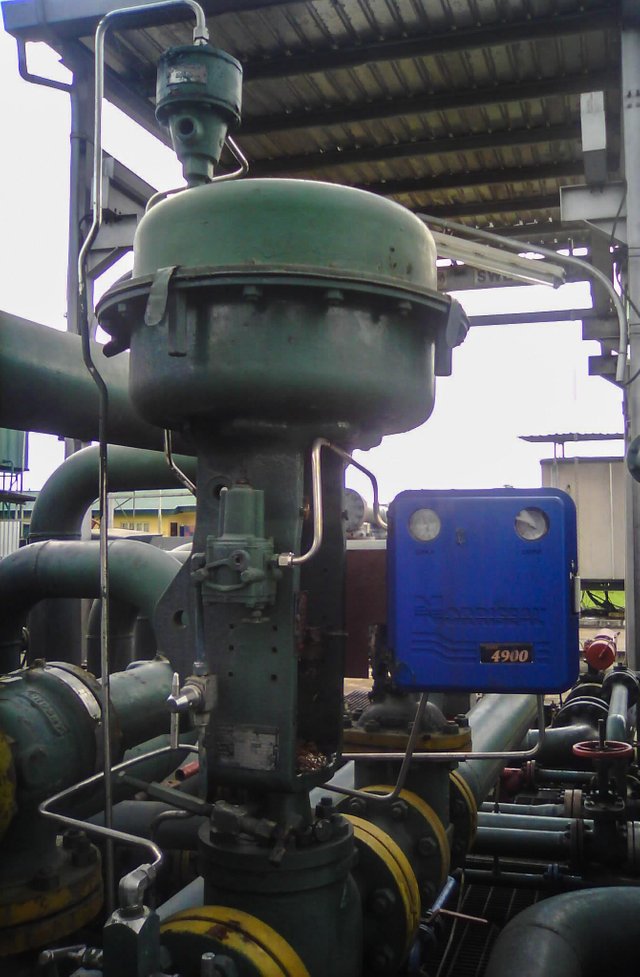 Back pressure control valve.
Back pressure control valve.
The High pressure separator is a two phase separator. This means that it separates hydrocarbon into liquid and gas phases. The high pressure separator helps to also step down the pressure of the hydrocarbon which it separates. The liquid from the HP separator flows into the LP separator through the help of a dump valve.
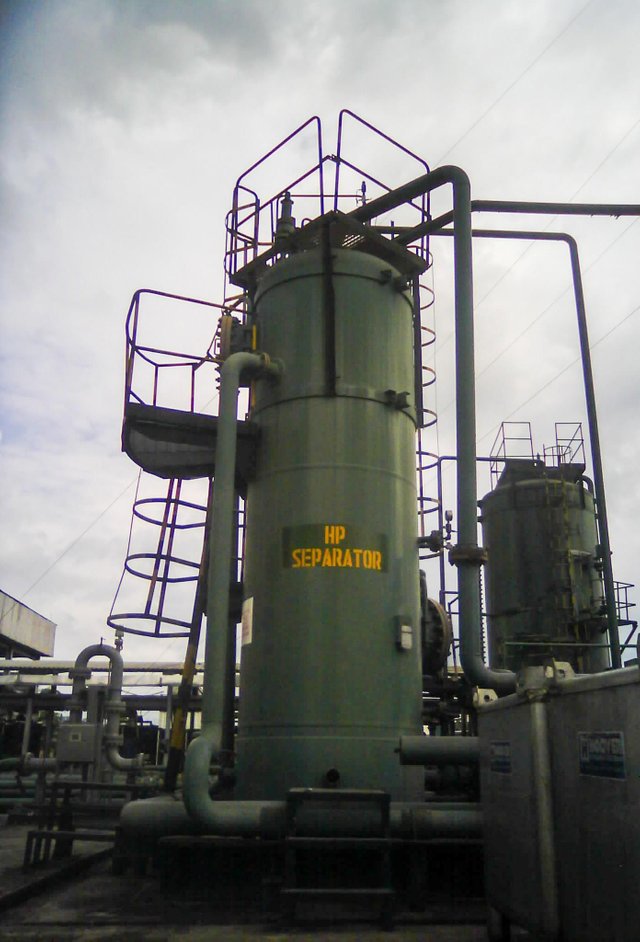 High pressure separator.
High pressure separator.
The LP separator has a static pressure set at 1.8bars. This static pressure is also maintained by the BPCVs and the LP vessel, also being a two phase separator separates the hydrocarbon into liquid and gaseous phases.
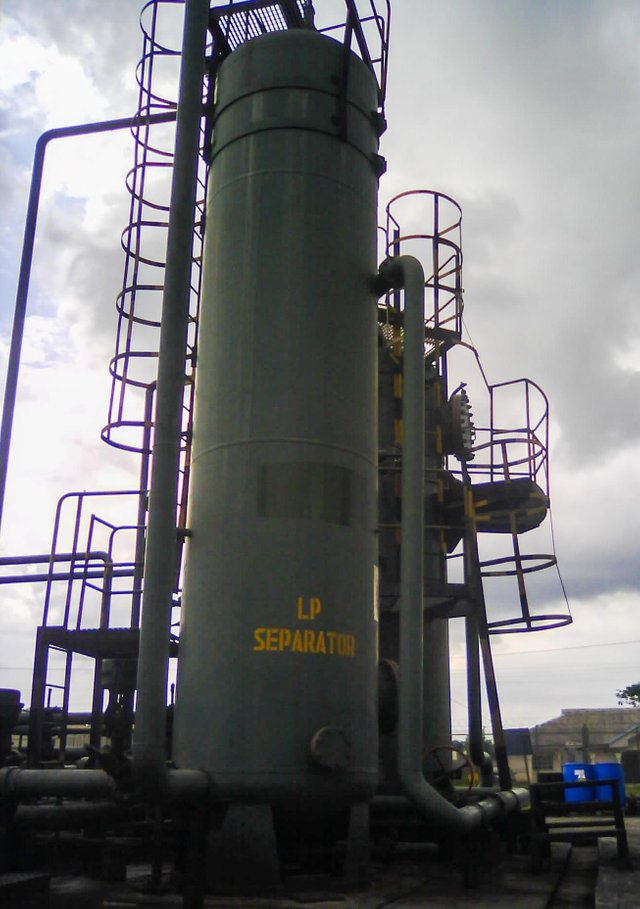 Low pressure separator.
Low pressure separator.
Note that all the gas separated by the HP & LP separators are sent to an Associated Gas Compression Station (AGCS) which compresses the gas and sends it back to the oil and gas wells to help the upward flow of weak or dormant wells through the process of gas lifting.
The liquid separated by both the HP & LP separators is then sent to the liquid treatment facility for further separation and treatment.
THE ROBERT-SHAW PANEL
The Robert-Shaw Panel, also referred to as the fail safe panel is the heart of the flowstation as it ensures that the entire process is running in safe mode in critical conditions
The RS panel is connected to all vessels in the flowstation and works in conjunction with all pressure and level controllers to sound alarms when each of these set points have been exceeded or have not been met.
The RS panel switches the flowstation to full manual mode when any maintenance jobs are being carried out.
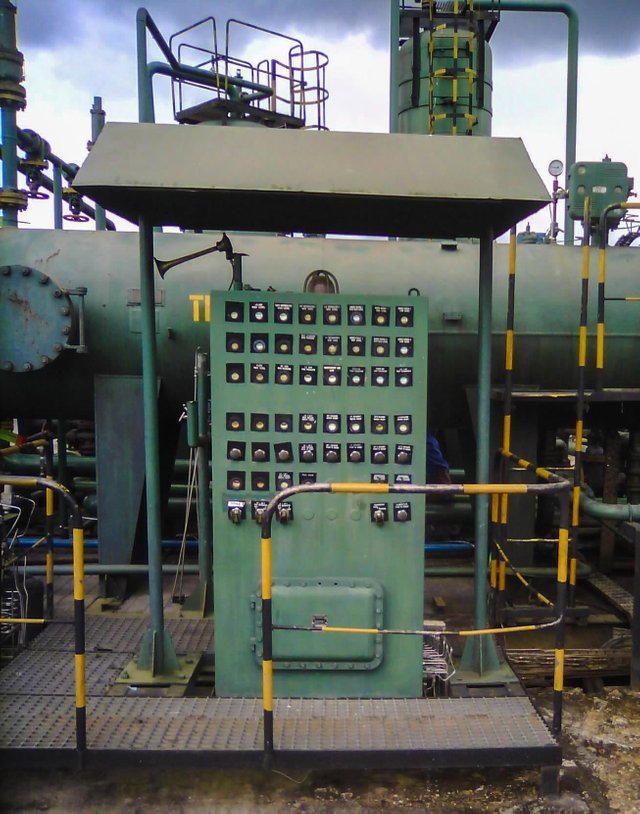
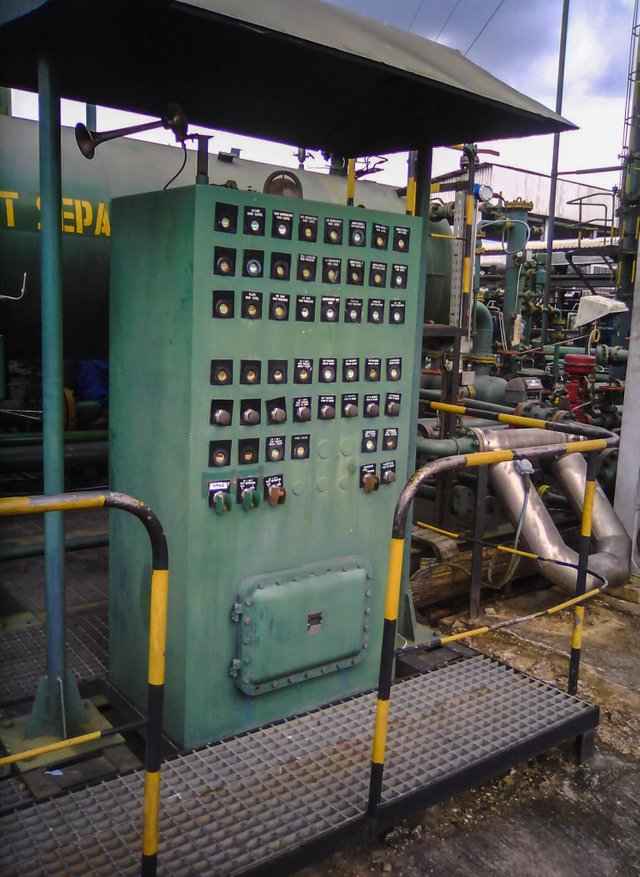 Robert-Shaw (fail safe) panel.
Robert-Shaw (fail safe) panel.
THE KNOCKOUT VESSEL
The knockout vessel serves as a receptacle to take in all gaseous discharges that are being sent to the flare tip in the facility.
It takes in gas from process and relief valves and ensures that liquid doesn’t get to the flare tip. This is possible as it is connected to the saver pit and any liquid that enters the knockout vessel flows by gravity to the saver pit.
LIQUID TREATMENT FACILITY
The liquid treatment facility is a facility which serves to receive hydrocarbon from the flowstation, separate the hydrocarbon on the basis of crude oil, water and gas by the help of 3 phase separators which further helps to lower the BS&W (Basic sediment and water) of the hydrocarbon and inject the produced water down to disposal/injection wells by the help of injection pumps.
The liquid treatment facility at SPDC receives hydrocarbon from all Seplat oil and gas fields within the Delta state axis (Oben, Sapele and Amukpe) and helps to further separate the hydrocarbon components to produced a much drier crude oil product.
LIQUID TREATMENT FACILITY (LTF) PROCESS OVERVIEW
Hydrocarbon from the flowstations at Oben, Sapele and Amukpe(Seplat oil and gas fields in Delta State, Nigeria) which have all been injected with demulsifiers all flow into the LTF at its inlets manifold header where they all comingle and enter into the 3 phase separators.
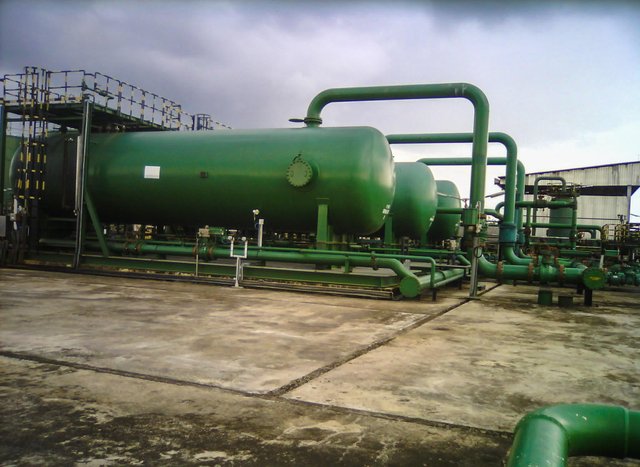 Liquid treatment facility inlet manifold.
Liquid treatment facility inlet manifold.
The 3 phase separators help to separate the hydrocarbon based on crude oil, water and gas phases by taking residence times into consideration to create good interface levels between the oil and water.
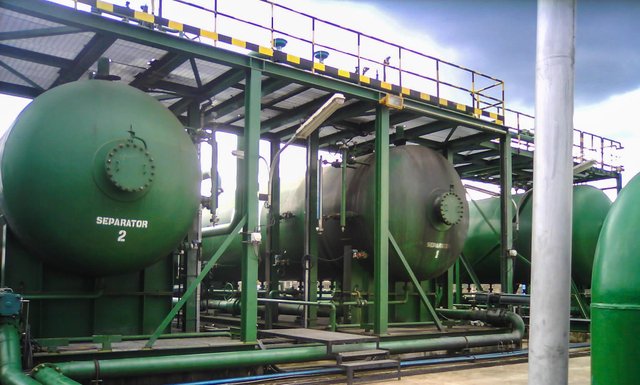 LTF first stage separators.
LTF first stage separators.
The 3 phase separator sends out oil through an oil outlet to the export pumps which send the crude oil down to the Rapele gathering manifold which then diverts the crude oil flow to either the Forcados oil terminal or the Warri Refining and Petrochemical Company (WRPC).
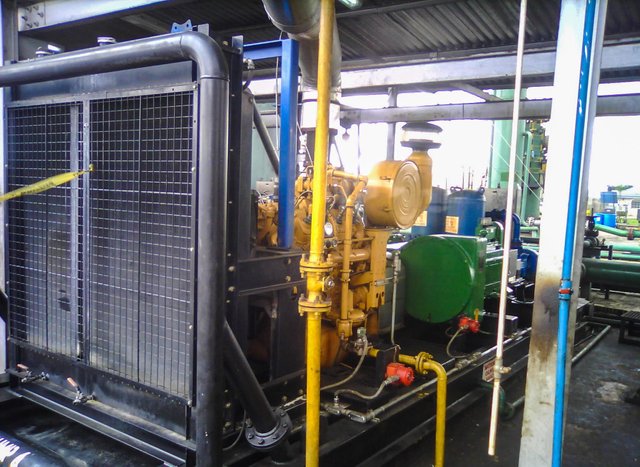 Export pump
Export pump
Produced water from the 3 phase separator is sent to the mono pumps which help to further pump the water into the produced water treatment (PWT) package.
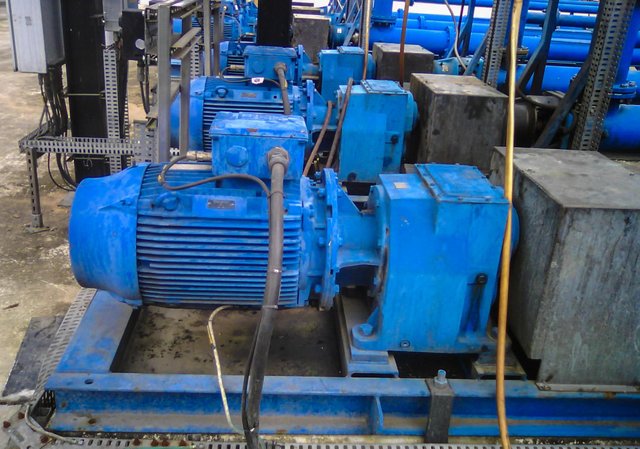 Mono pumps
Mono pumps
The 1st stage of the PWT package is the de-oiler. The de-oiler sends any oil separated from the water through an oil reject line back into the 1st stage separators. The water flows into the de-sander. The water flowing through the oil reject line is injected with water clarifiers to clean the water, reduce turbidity and recover oil from produced water.
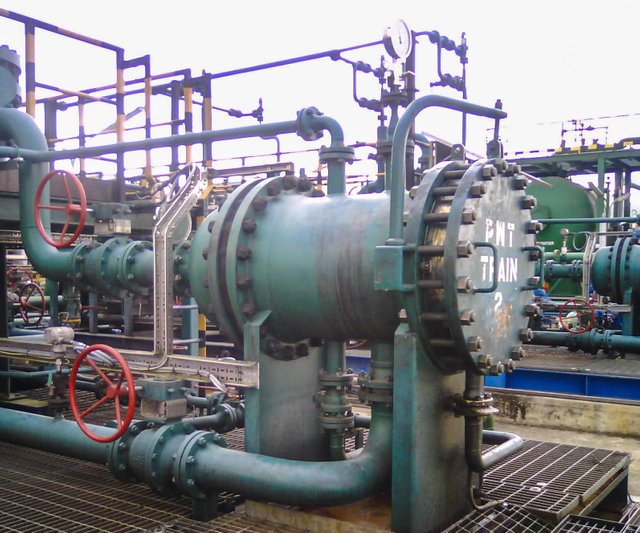 Produced water treatment package de-oiler
Produced water treatment package de-oiler
The water enters the de-sander where any solid particles accompanying the water are removed. The produced water flows into the bag filters which help to filter out any particles that accompany the produced water.
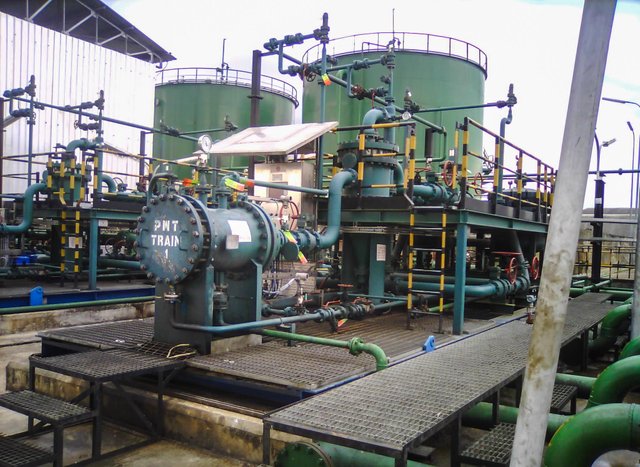 Produced water treatment package.
Produced water treatment package.
The produced water then flows downstream to surge tanks. In the surge tanks, the water enters one surge tank and lets the water settle. It then flows into another surge tank through an equalizing line.
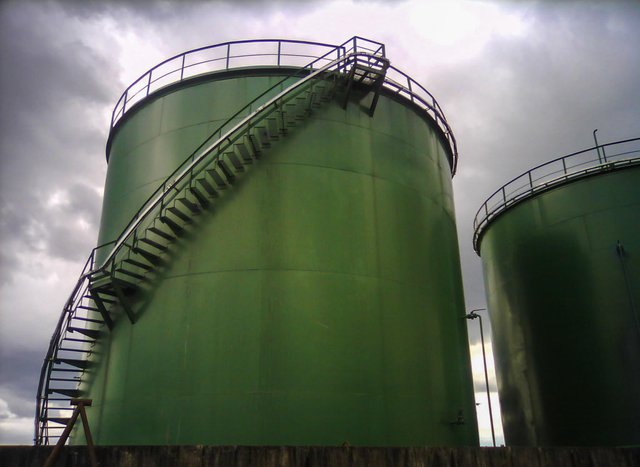 Surge Tanks
Surge Tanks
The produced water is then pumped into disposal wells by water injection pumps.
A lot of other processes occur before crude oil is gotten in its final and retail form. Such processes include subjecting the crude oil to fractional distillation in fractionating columns. That process is another entire exciting part of chemical engineering.
I hope this post was able to enlighten those that were in the dark about this industrial process. All images and texts are original works of @thejotographer. DSLRs and pro cameras aren't allowed on the facility for safety reasons so all images were taken with a safety camera. Cheers!!
wow thats alot of good info, really love lookin at the infrastructure. followed
Thanks a lot. Glad you liked this
I must say it wasn't wasted 6 months. The most common thing amongst our universities in Nigeria is the lack of enough practical experience for her technological students. Thanks to the educators and private and public sector alike that have created opportunities like this for better mastery of the practical ends of professions like this.
The closest I've had to things like this was how raw water is gotten from the dam and goes through all the required processes before becoming what is distributed as portable water. It was an interesting experience. The most interesting part to me was the fact that sand is used as a filtration agent; just as can be found in your post here too.
I can boldly say what you've got here is adequate enough for a fellow chemical engineer or even a prospect develop some interest in the oil fields. You brought the oil fields live to us on steemit. I'm glad I read this and I hope and believe a lot more people would get to read this too.
Meanwhile, I have seen you explain the process the water from the "crude 'crude oil'" is treated. Would love to see what happens to the crude oil itself maybe in your subsequent post. A blow out of how the petrol,diesel,kerosine, paraphene e.t.c are gotten. Only though I doubt you might be able to get original photos as I'm aware of the secretive nature of stuffs like that but I guess you can make do with whatever is on the internet.
Steem on...
@dorth...
Thanks a lot @dorth it was a really exciting experience. My only regret was the fact that I could not capture my images with a pro camera or a DSLR. I had to use a safety camera to capture the images and edit them using adobe lightroom . You can also check out my previous post on fractional distillation. You might gain a thing or two from that post as it also talks about crude oil processing. Cheers sir!!
Wow! Cool... The post just about explains what I was expecting. Steem on brother.
You really spent your six months learning. The fact that you were able to come up with this article shows that to a great extent you participated actively during the training and you involved yourself with the process flow!
It is a good thing that universities were able to structure their academic calender to fit in industrial training, I am glad you utilized it well.
Cheers!
omonosa
Thanks for stopping by ..
Quite educative i must say nice one
Quite educative i must say nice one
what a post... thanks for this post @thejotographer
I love this mehn..nn.. I'm a petroleum engineer..nice work
I love this mehn..nn.. I'm a petroleum engineer..nice work
Thanks for sharing your experience, and we look forward to hearing more about your time at Seplat petroleum development company!
Your experience at Seplat petroleum development company sounds like a fantastic opportunity to apply your chemical engineering knowledge in the real world! Working at different facilities must have provided you with valuable insights into the oil and gas industry's operations. It's great that you're sharing your experiences and knowledge with others.
For those interested in investment opportunities in the oil and gas sector, you might find www.oilandgasinvestmentfunds.com useful. It could be a good resource for exploring potential investments or learning more about the industry.